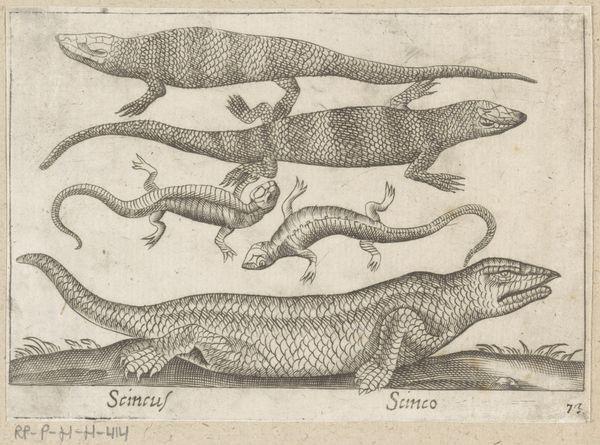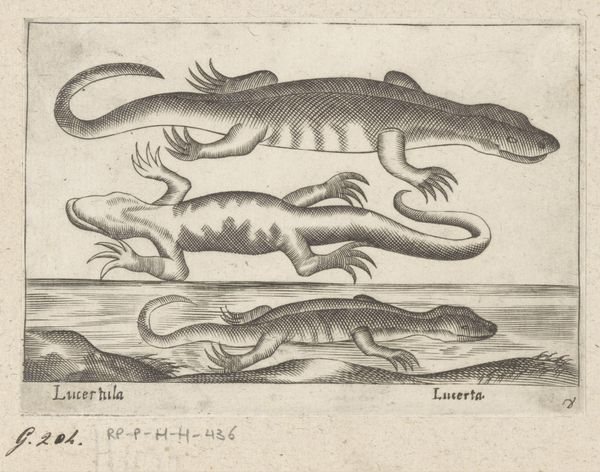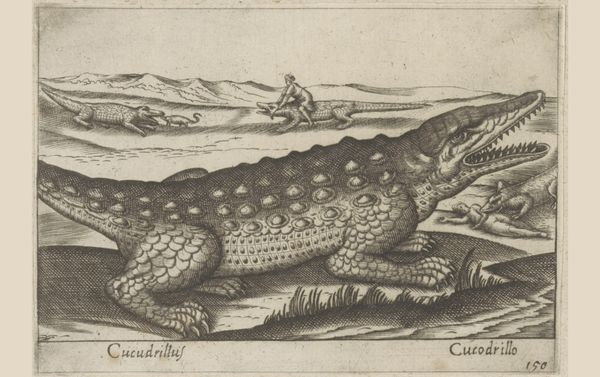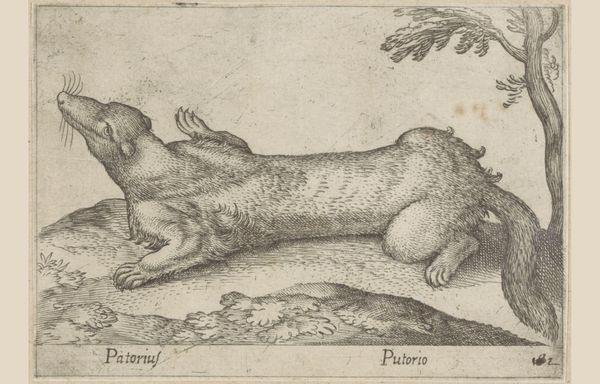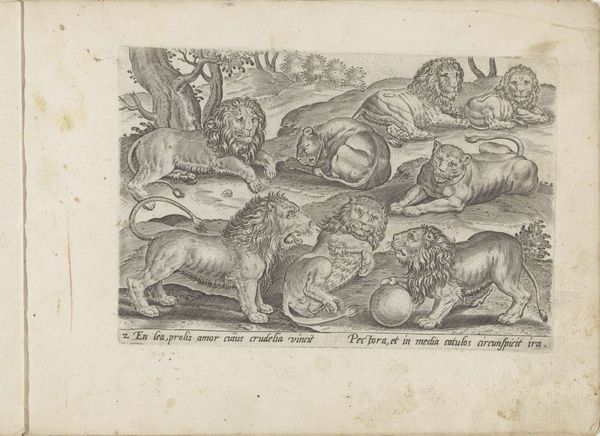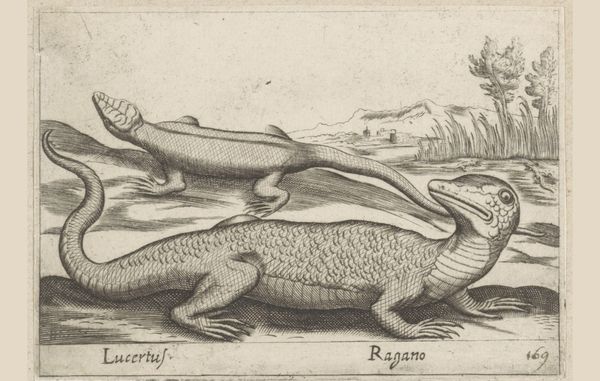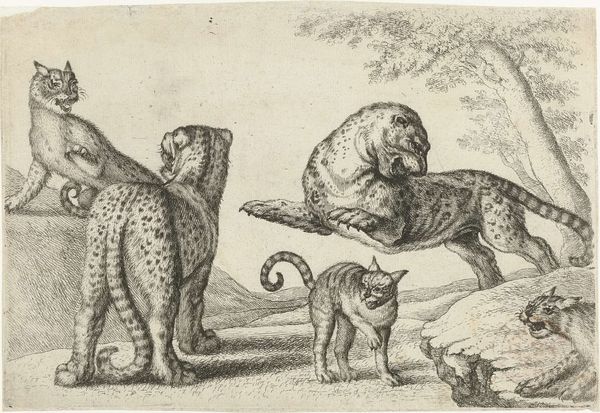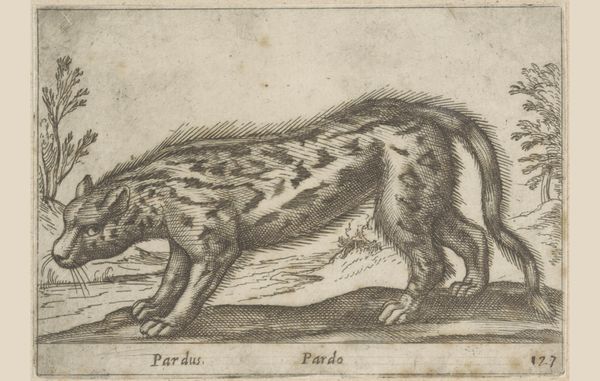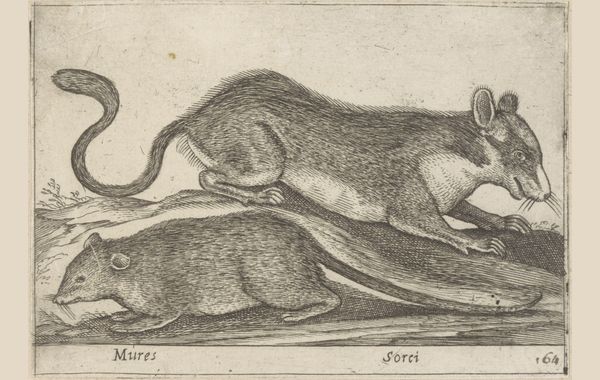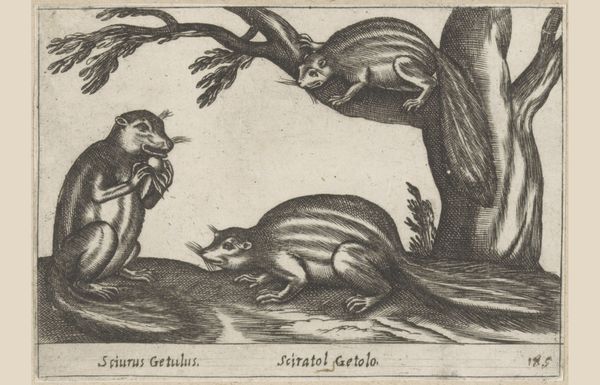
print, engraving
#
animal
# print
#
11_renaissance
#
engraving
#
realism
Dimensions: height 95 mm, width 137 mm
Copyright: Rijks Museum: Open Domain
This print, "Kleine krokodillen," was made by Antonio Tempesta, sometime between the mid-sixteenth and early seventeenth centuries, using etching and engraving. These processes are deeply connected to the rise of capitalism. They allowed for images to be reproduced and distributed widely, fueling the demand for visual information during the age of exploration. The print's fine lines and detailed textures are a testament to the labor-intensive processes of etching and engraving. Tempesta would have painstakingly cut into a metal plate, using acids to eat away at the surface. Note how the process lends itself to the depiction of texture – see how carefully each scale of the crocodile is rendered. The print's cultural significance lies in its representation of exotic animals, reflecting the growing European interest in the natural world, and maritime trade. As we consider prints like this, it’s important to remember that the beauty and artistry also speak to labor, politics, and global exchange of resources, and exploitation. The rise of mechanical reproduction allowed for the democratization of art.
Comments
No comments
Be the first to comment and join the conversation on the ultimate creative platform.
